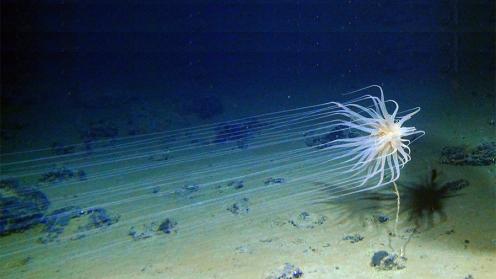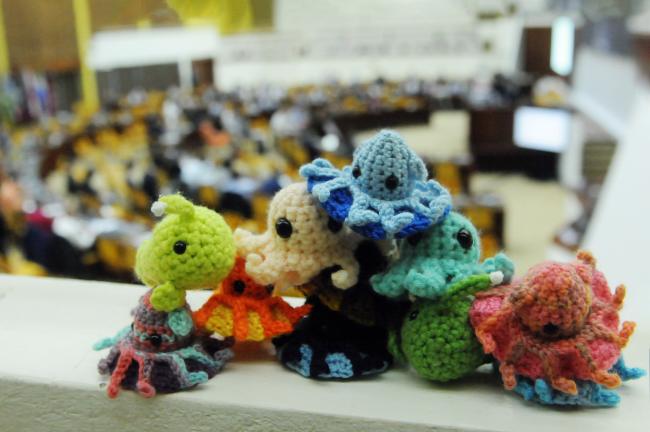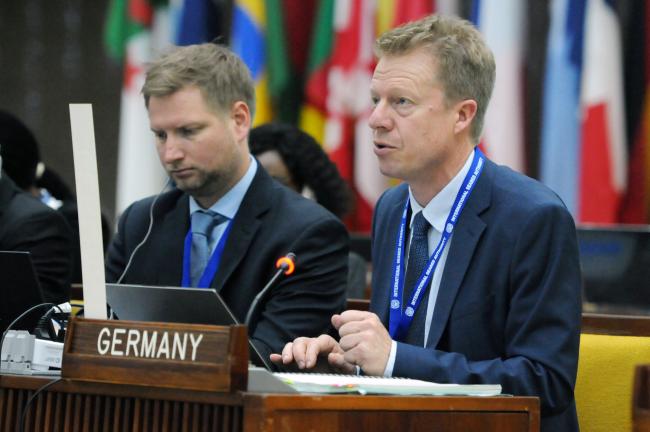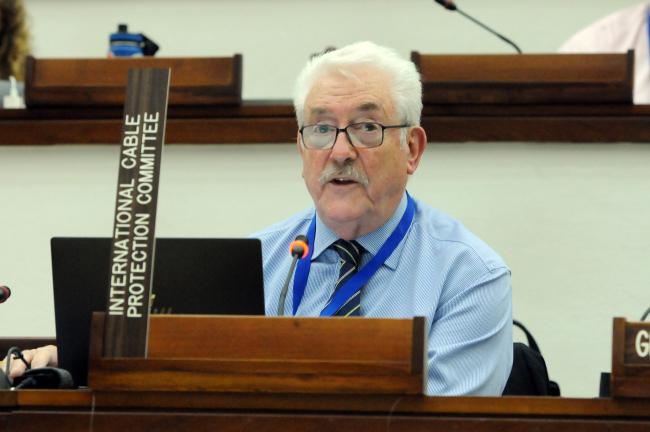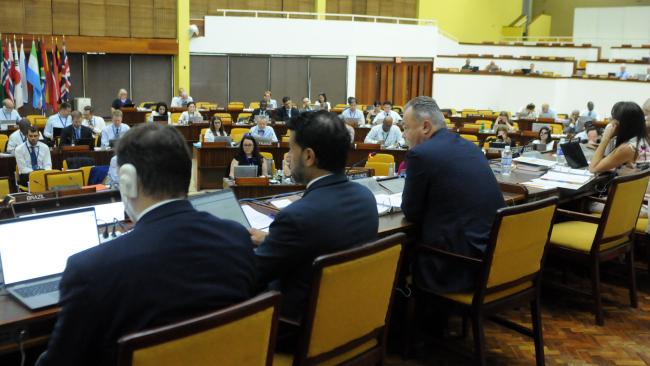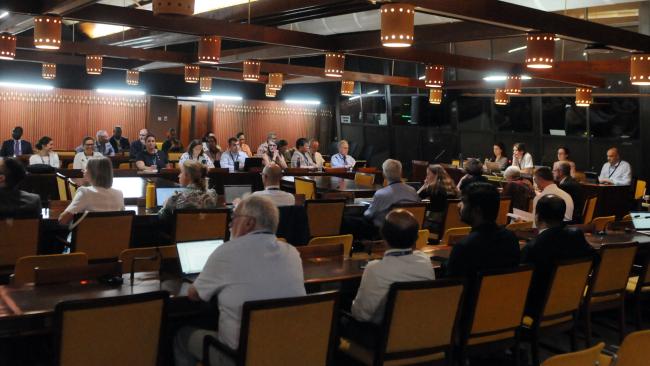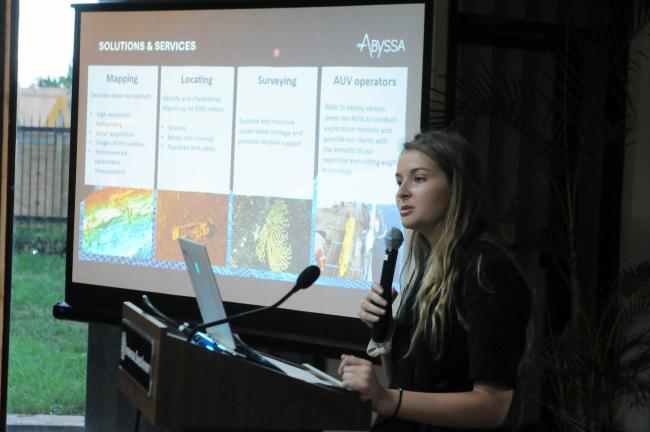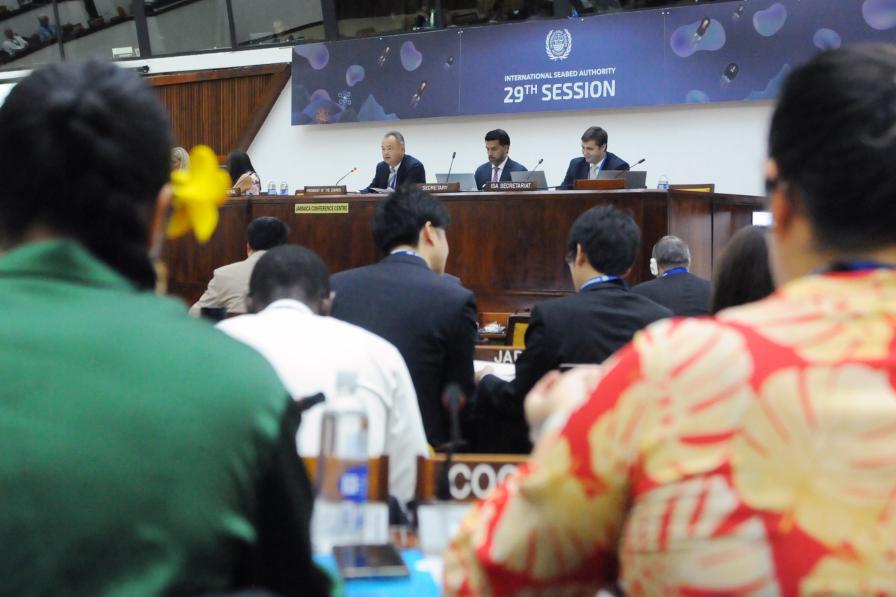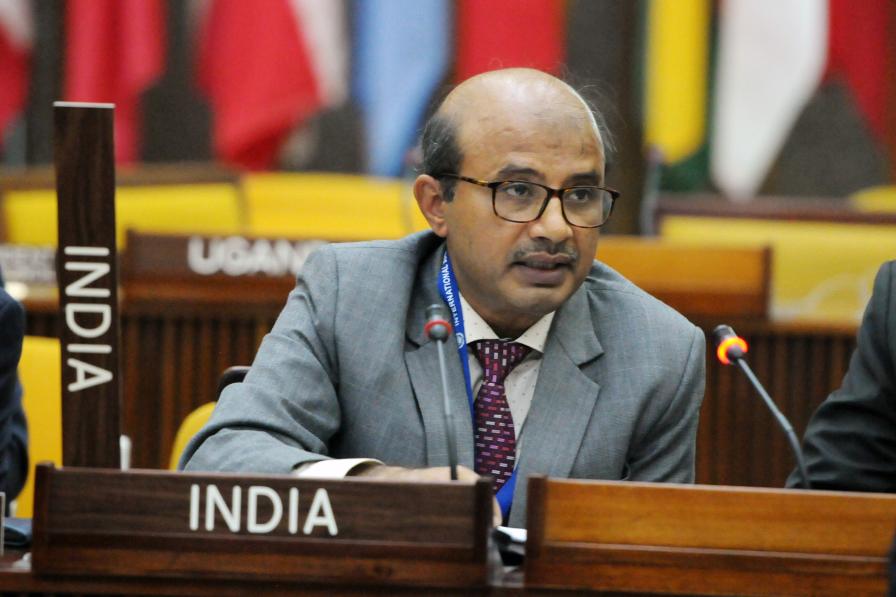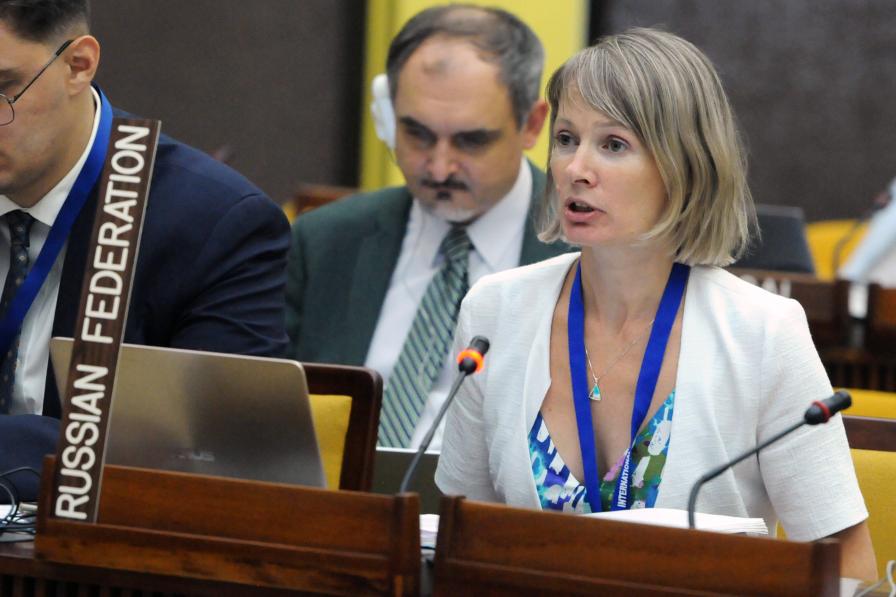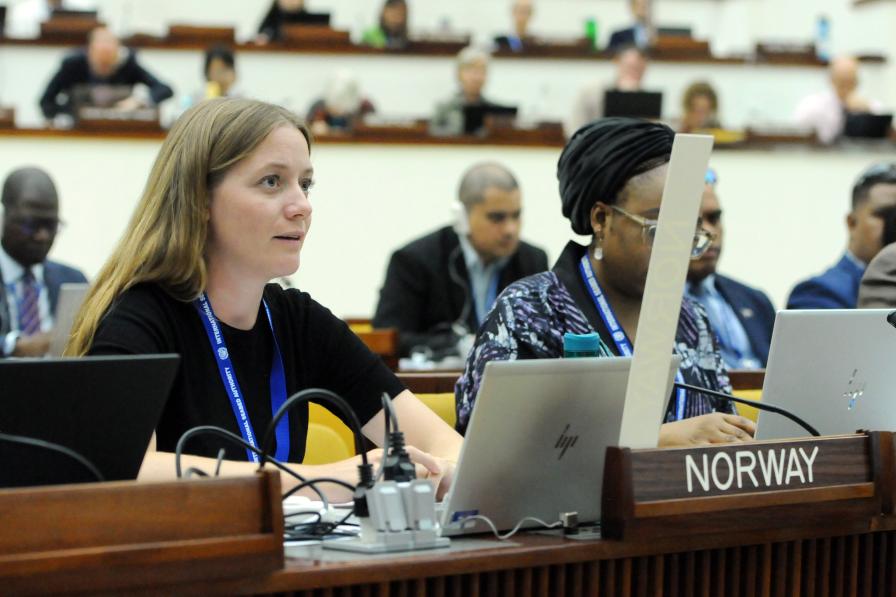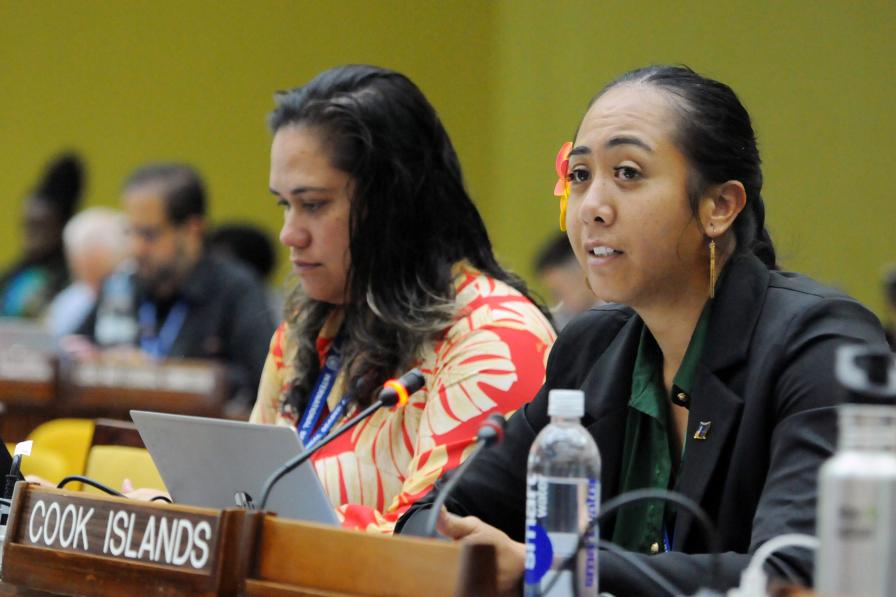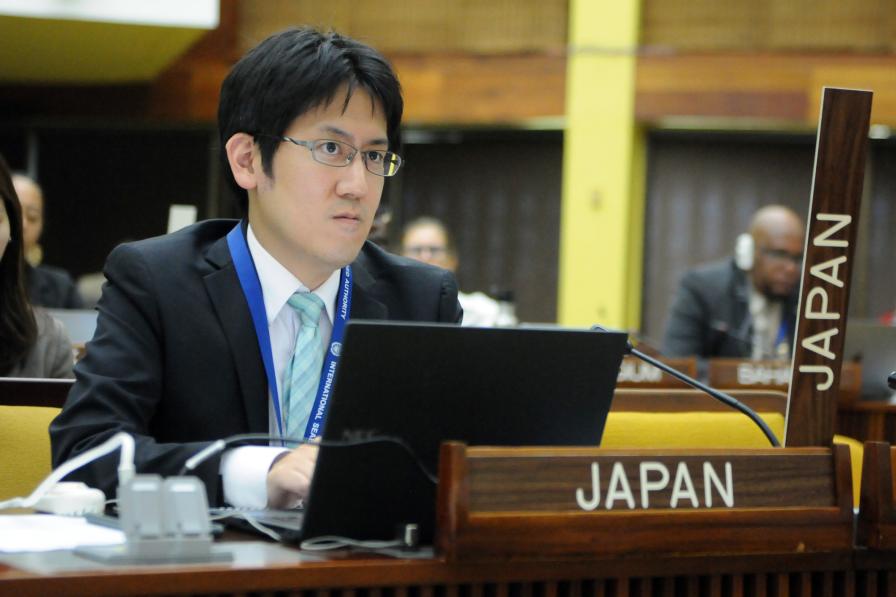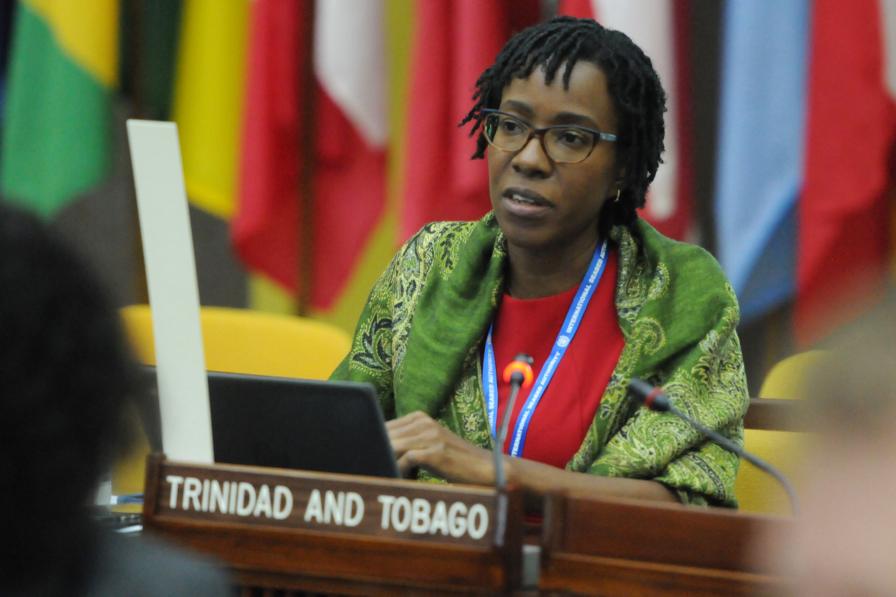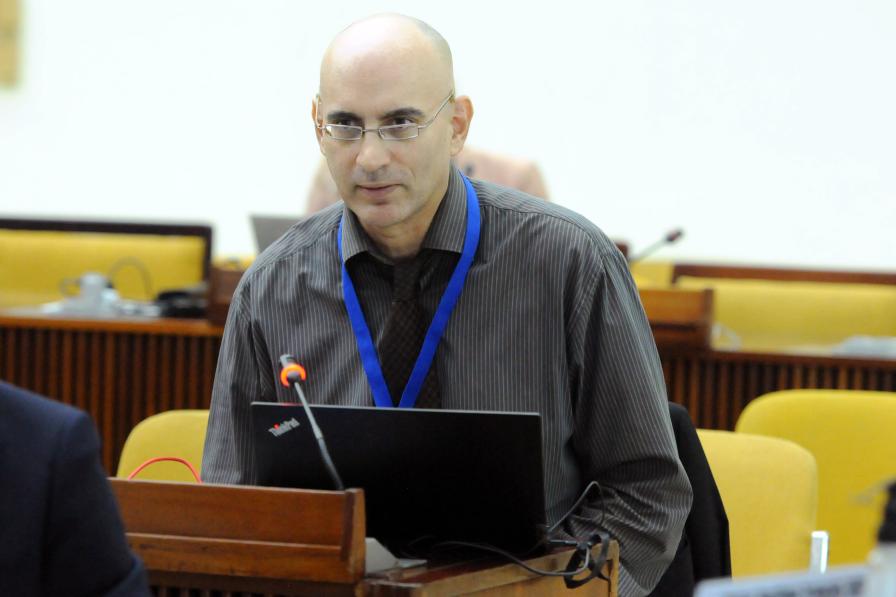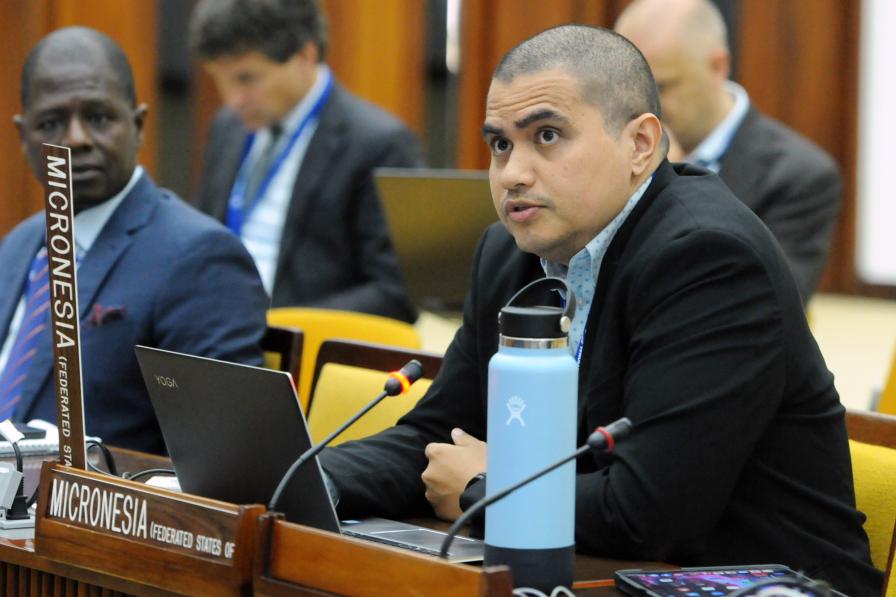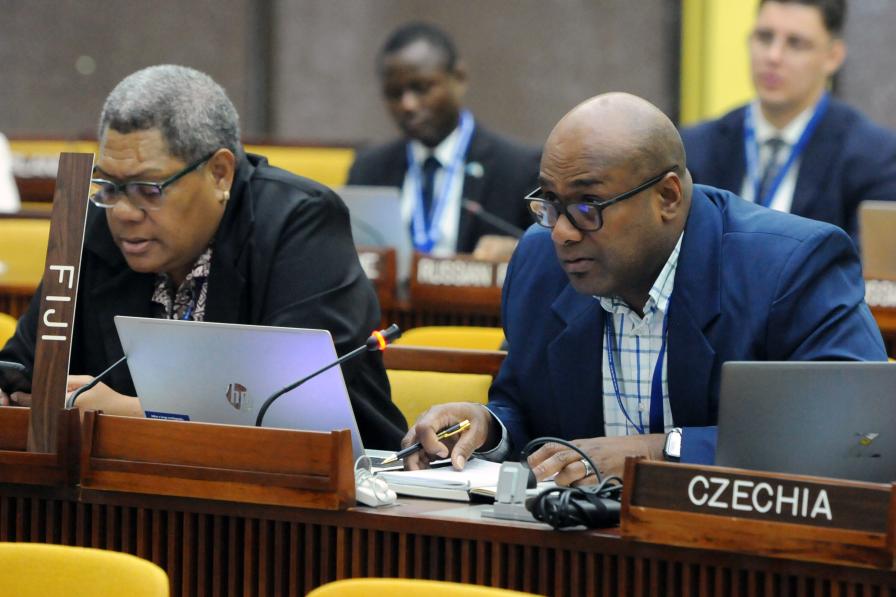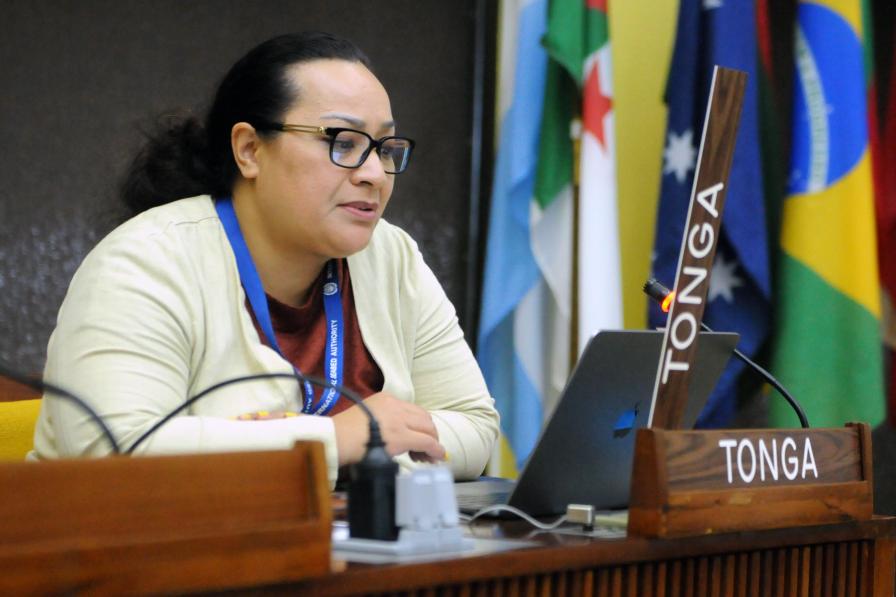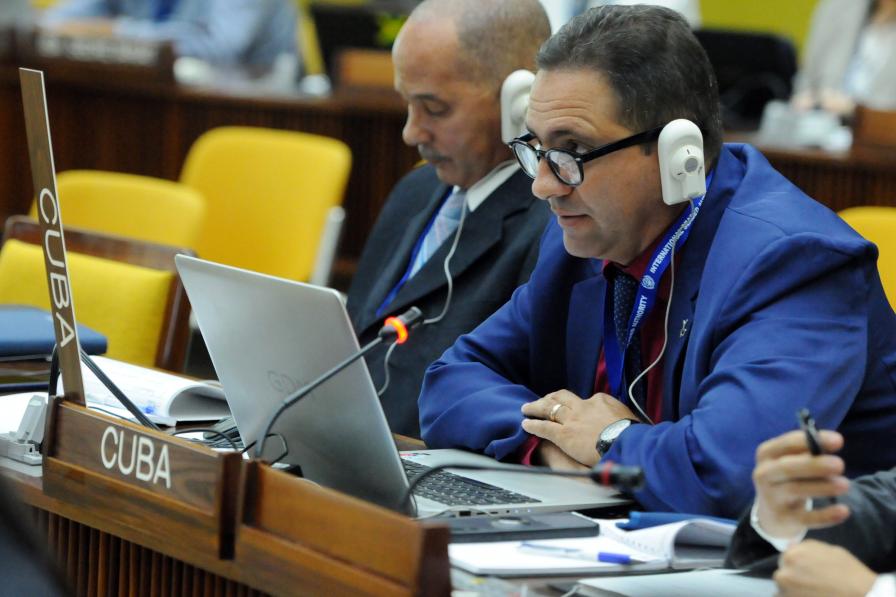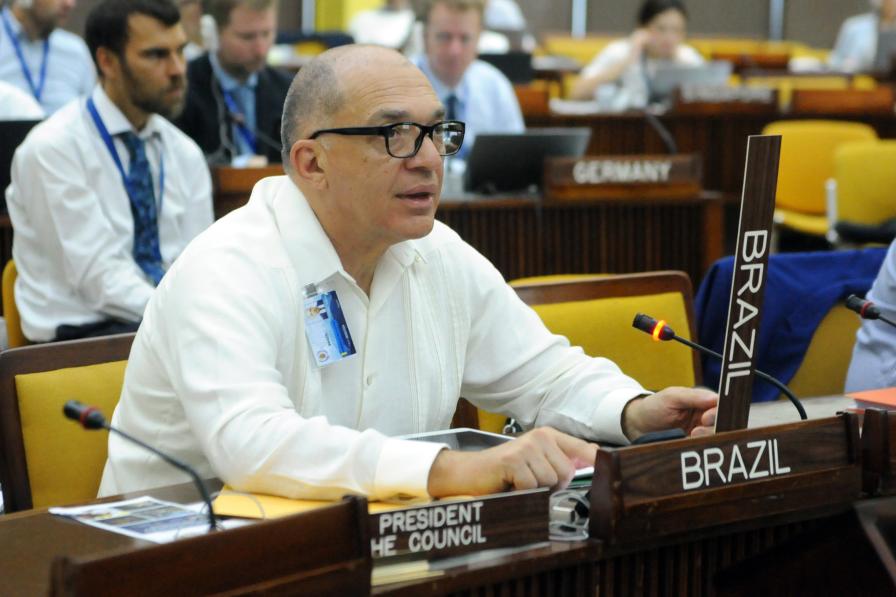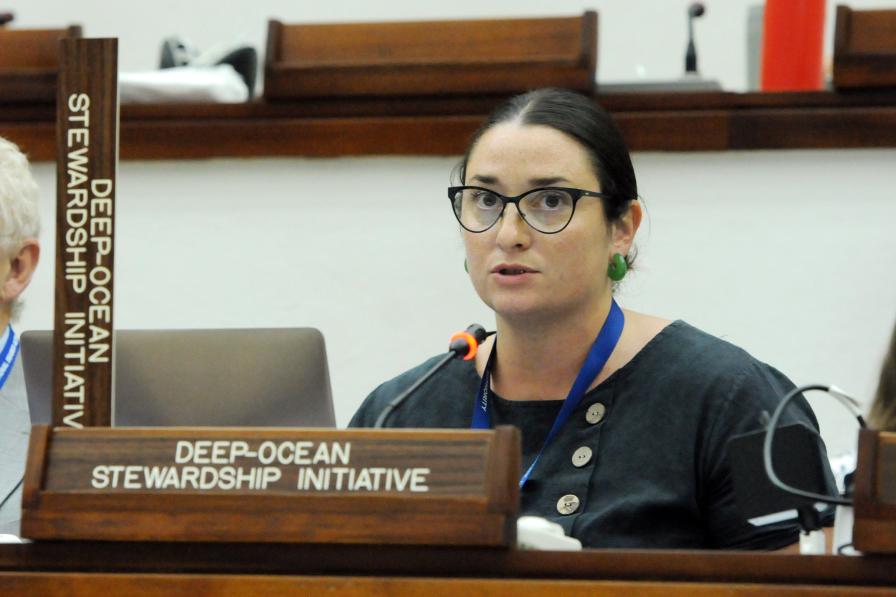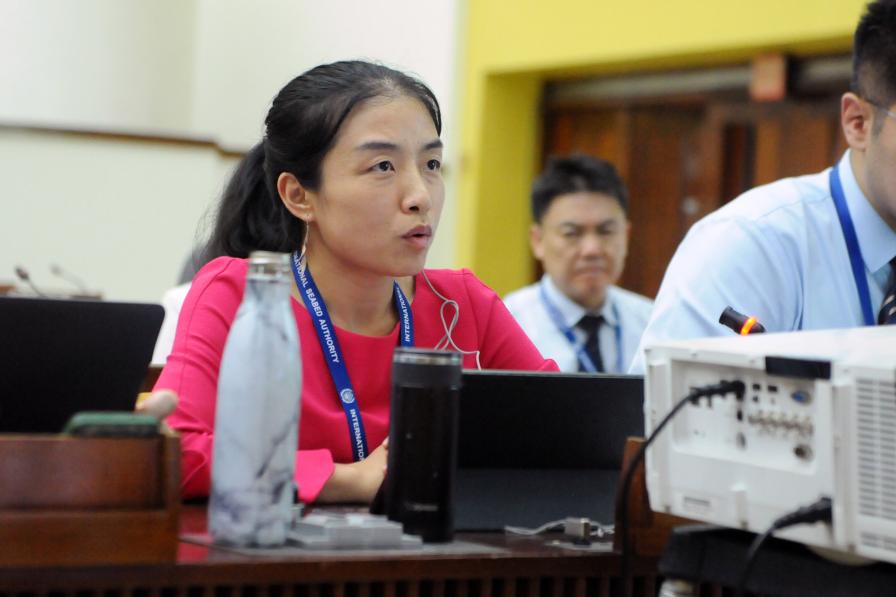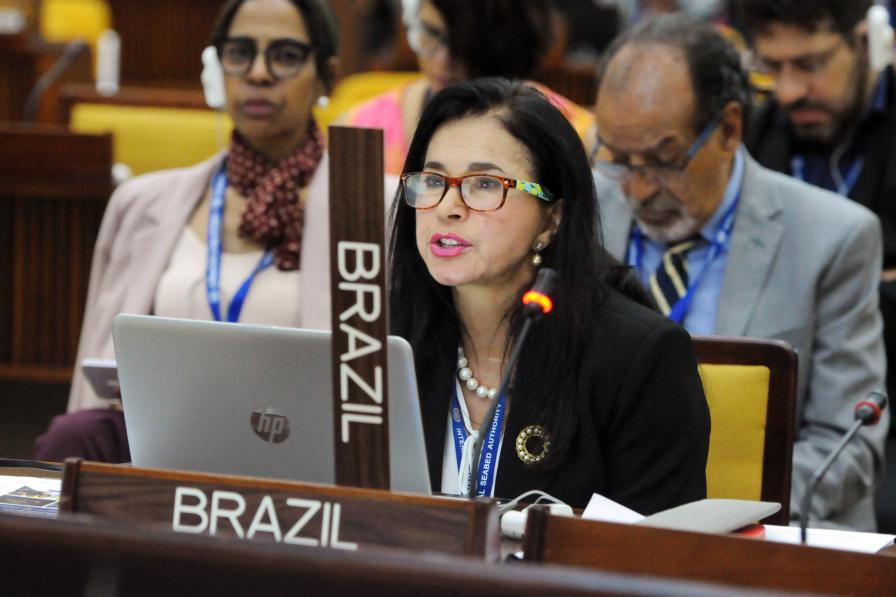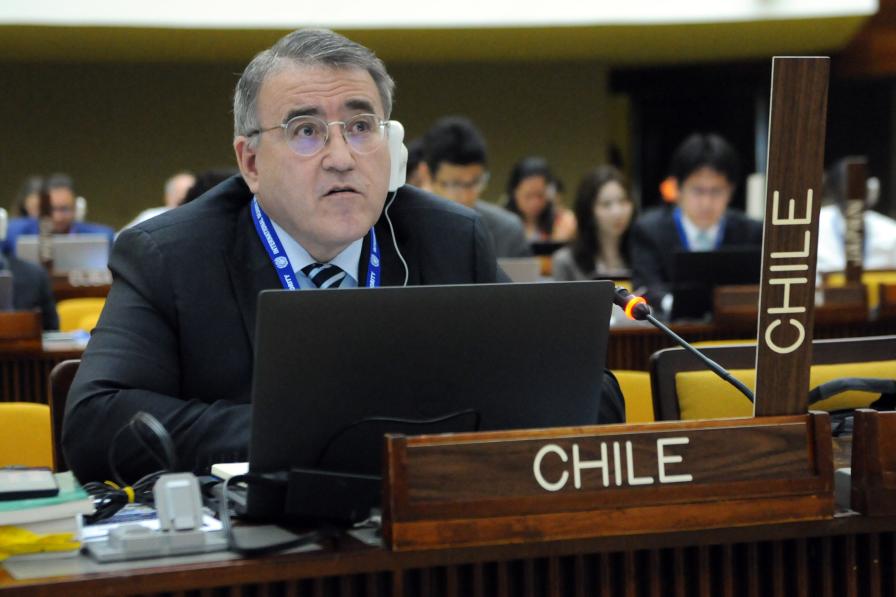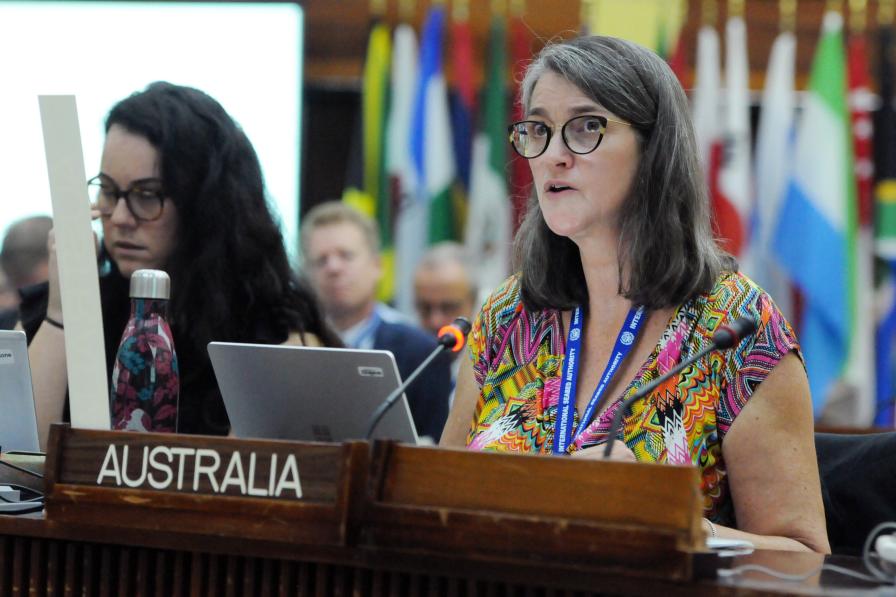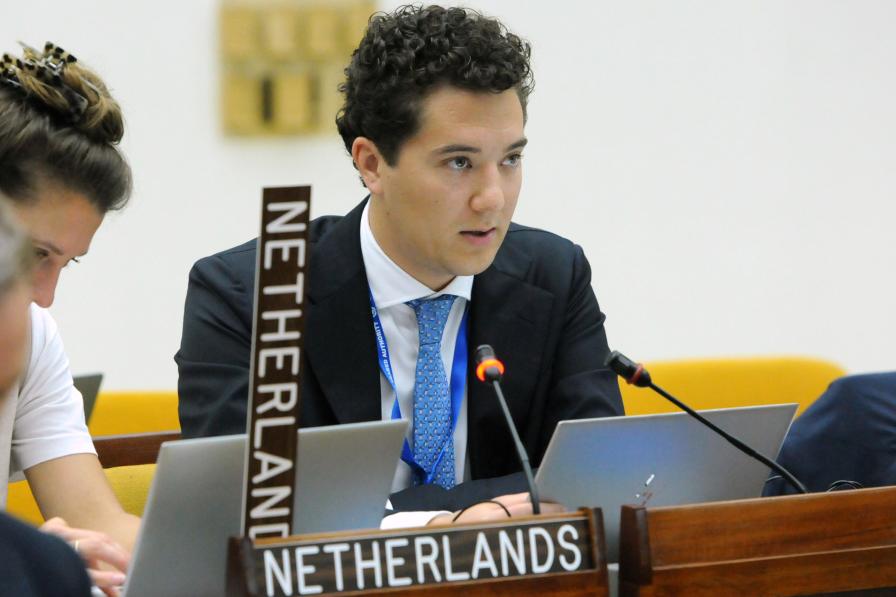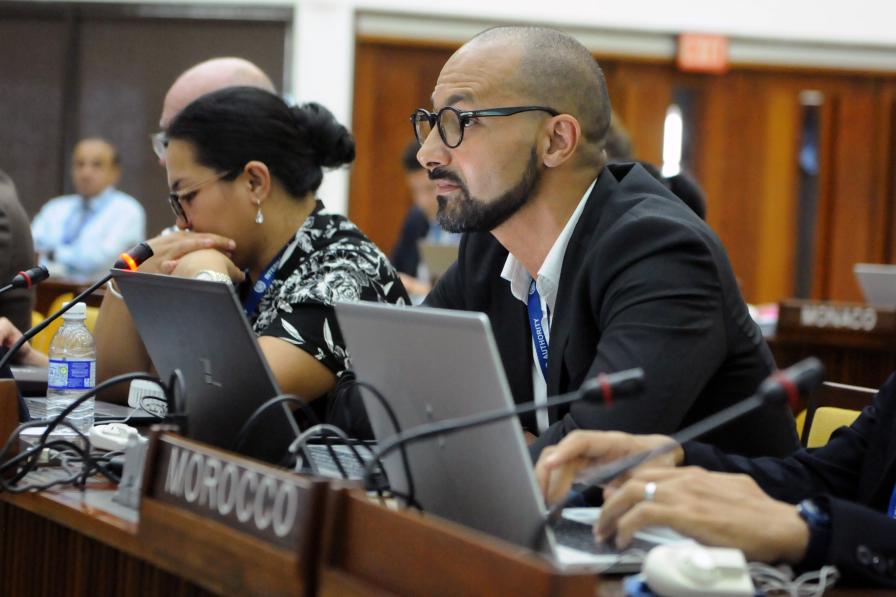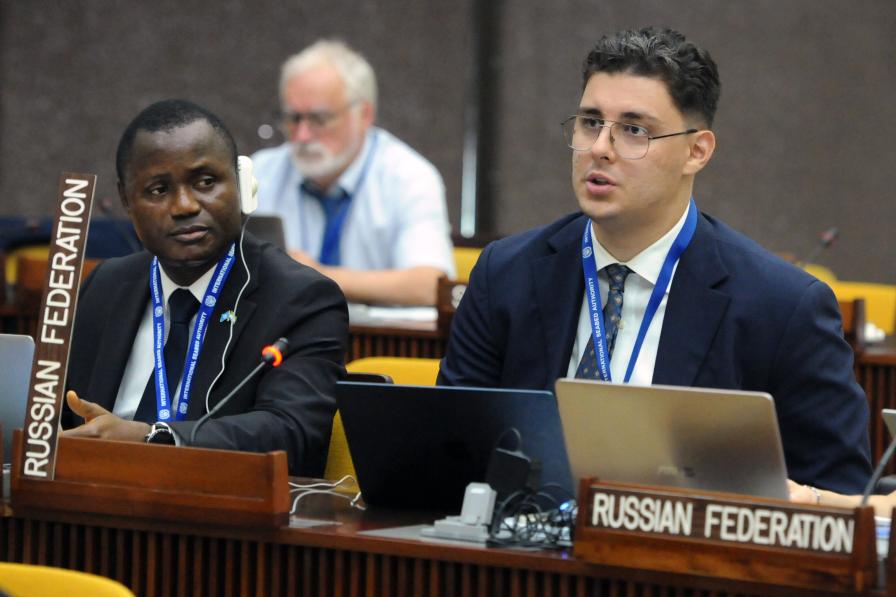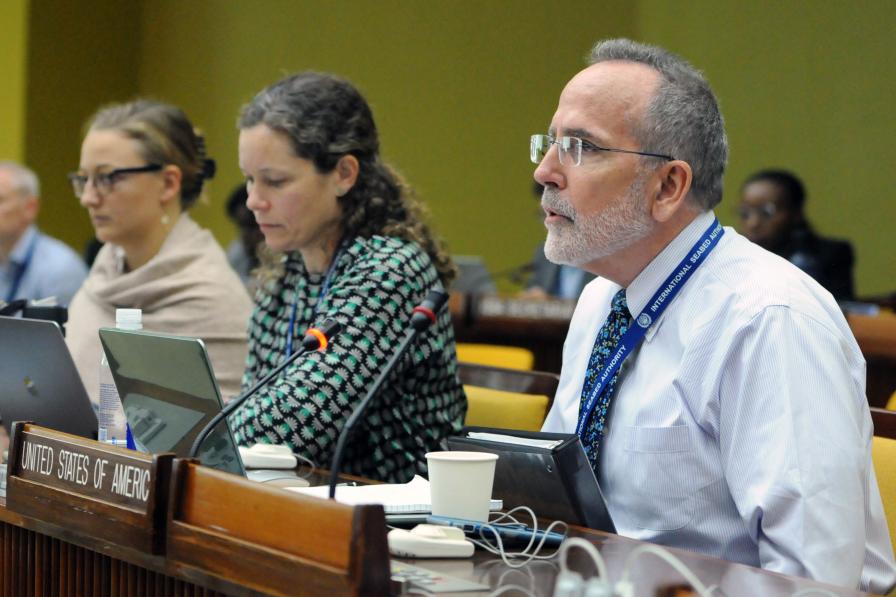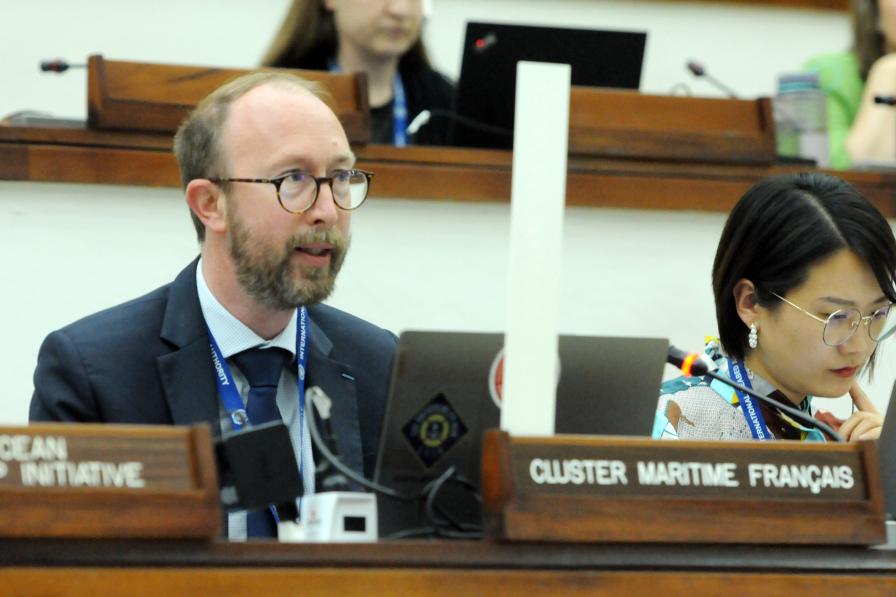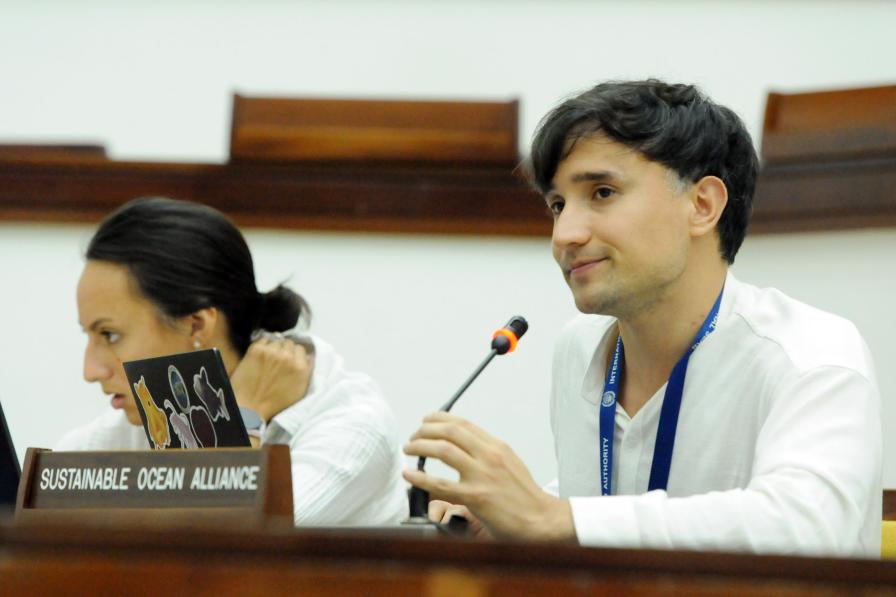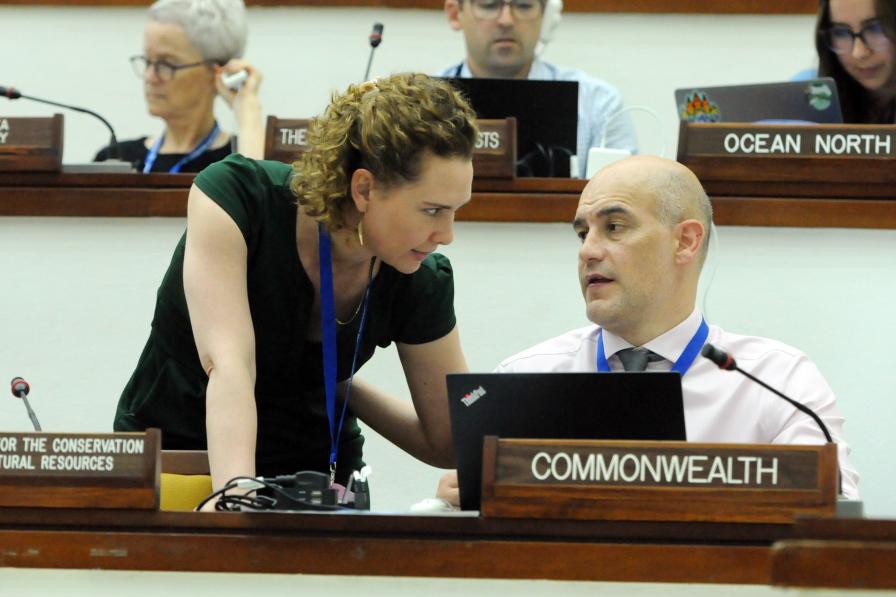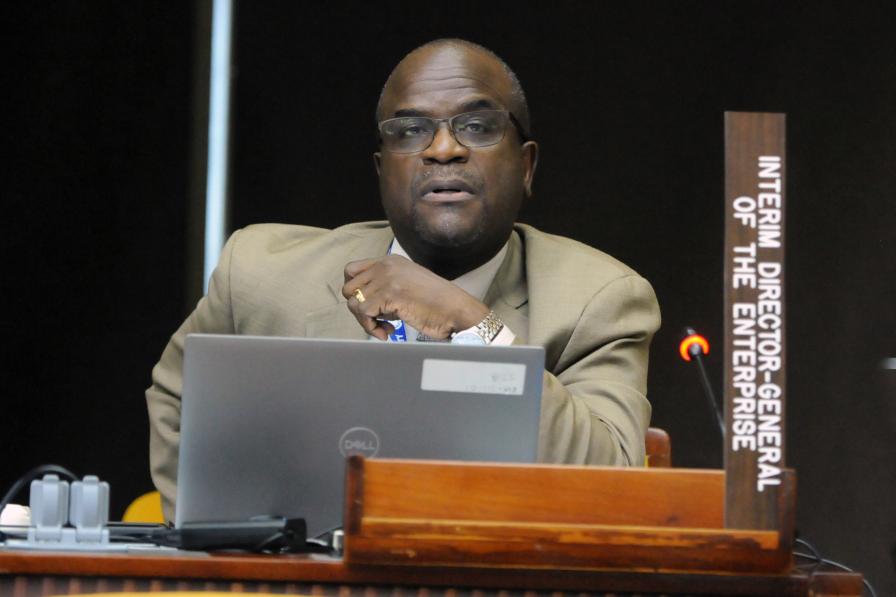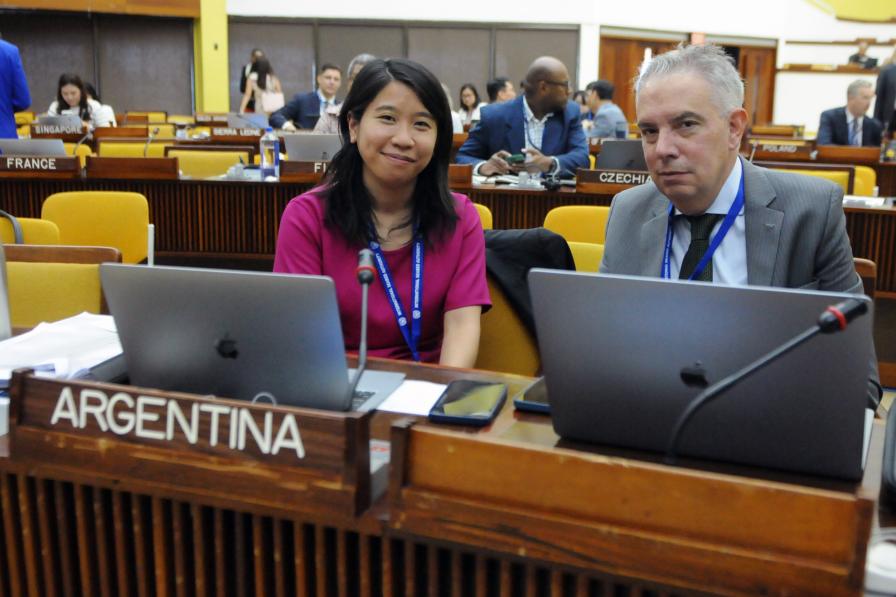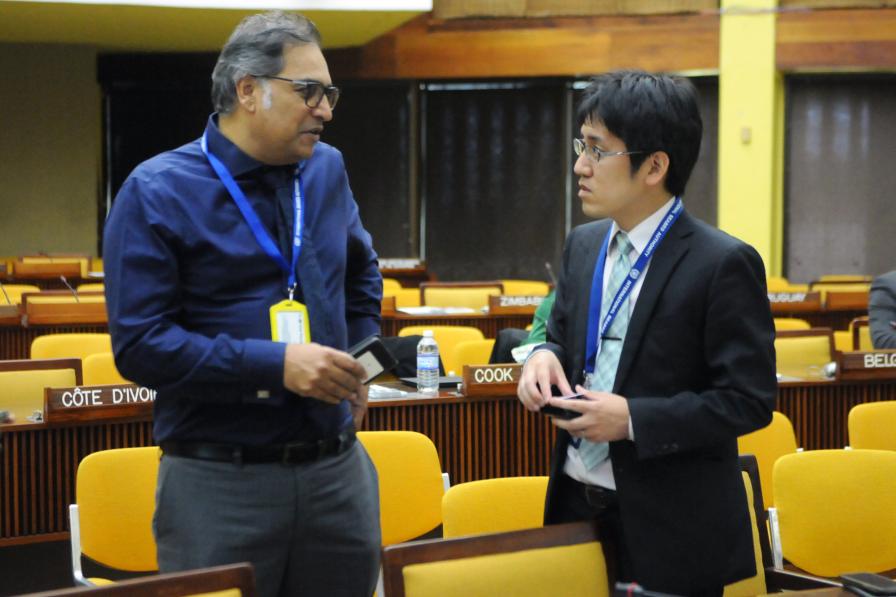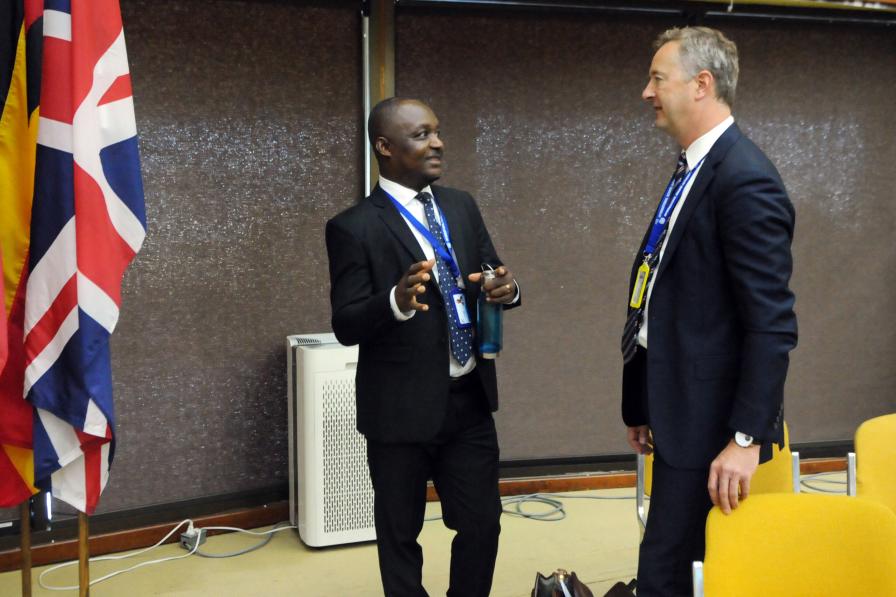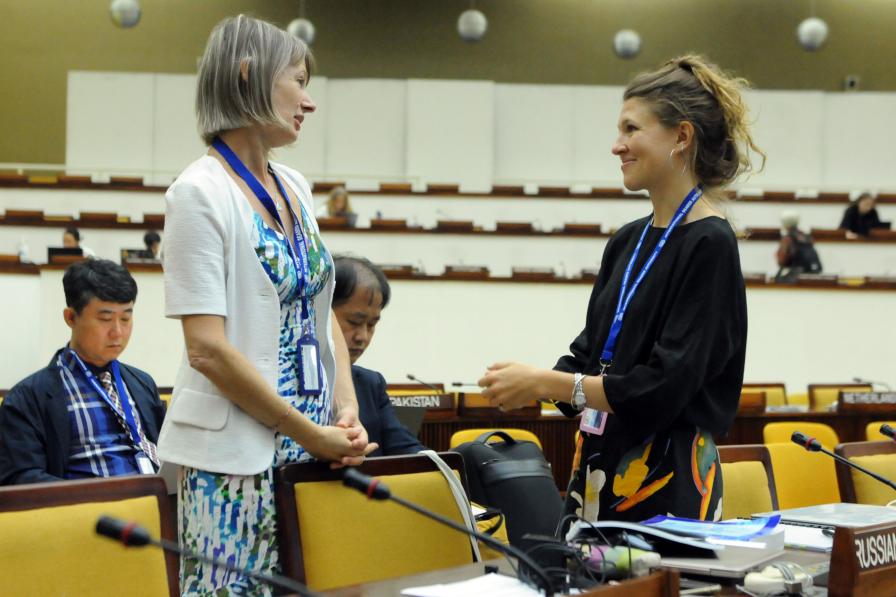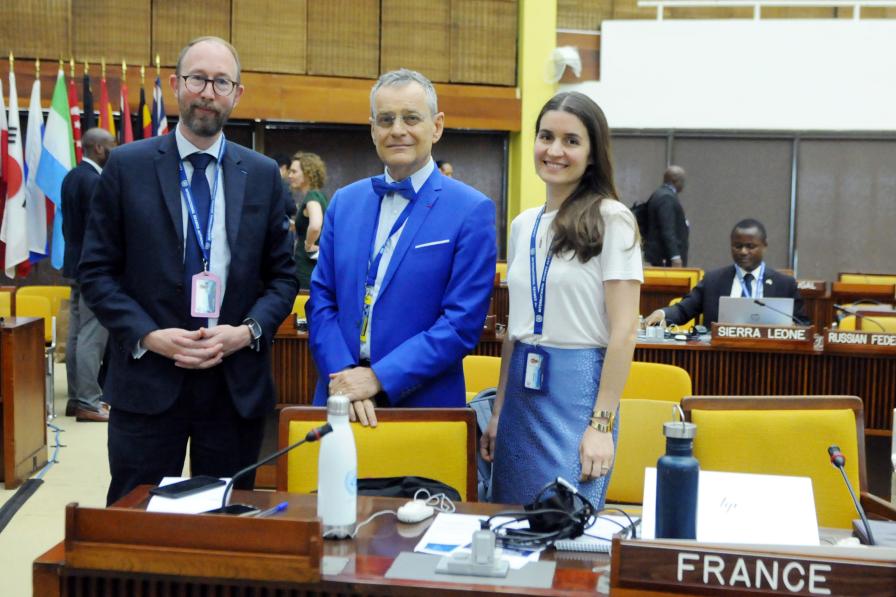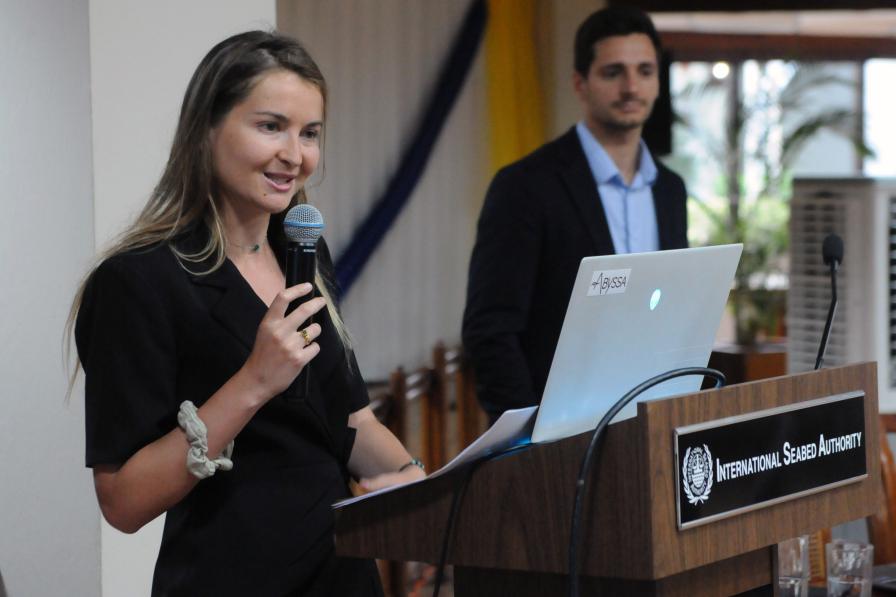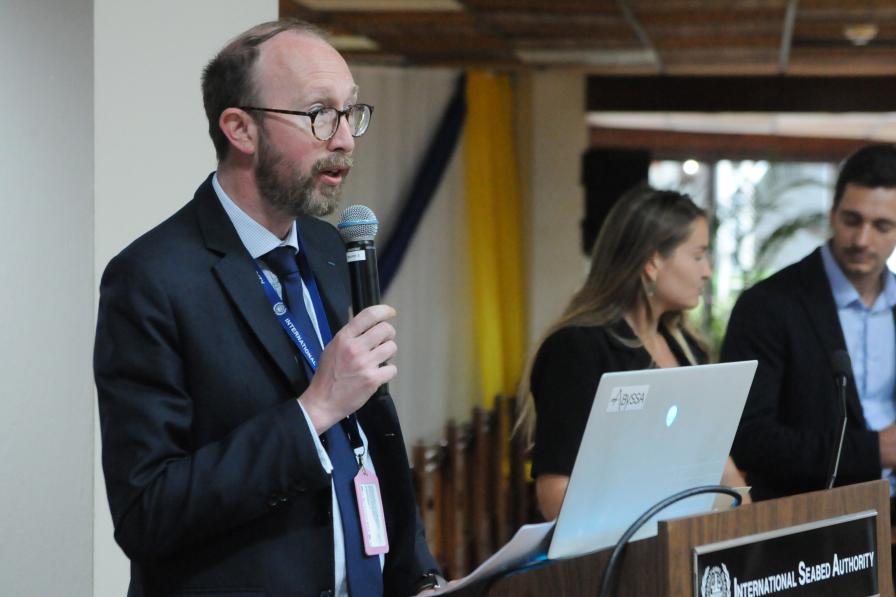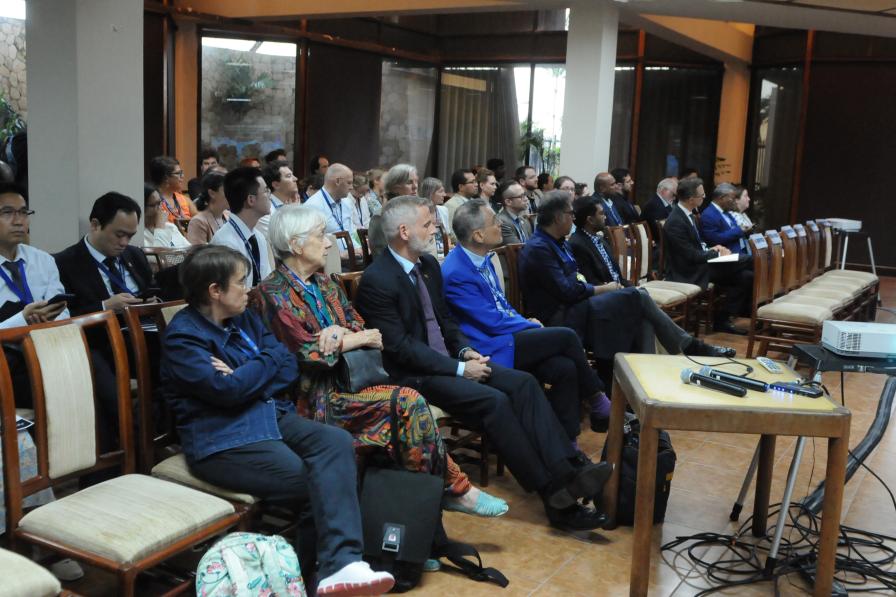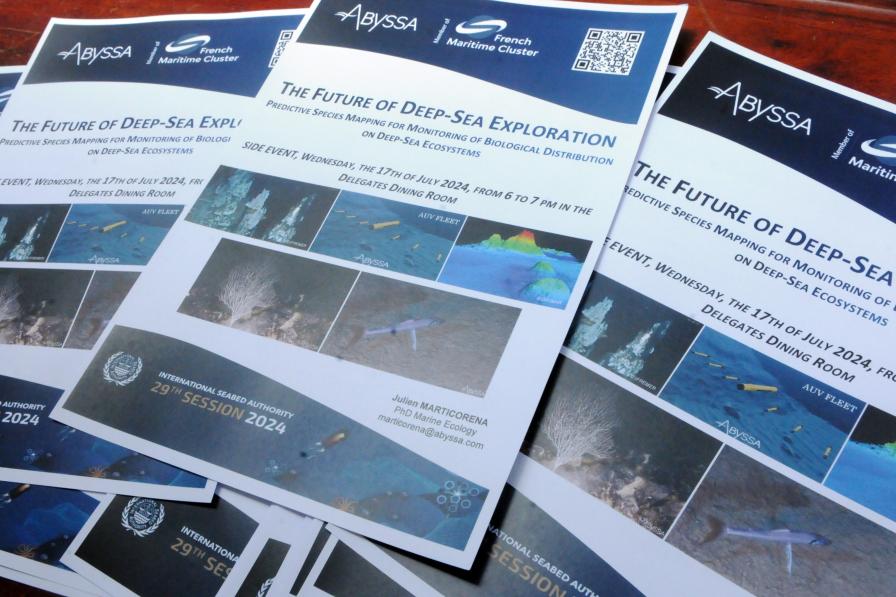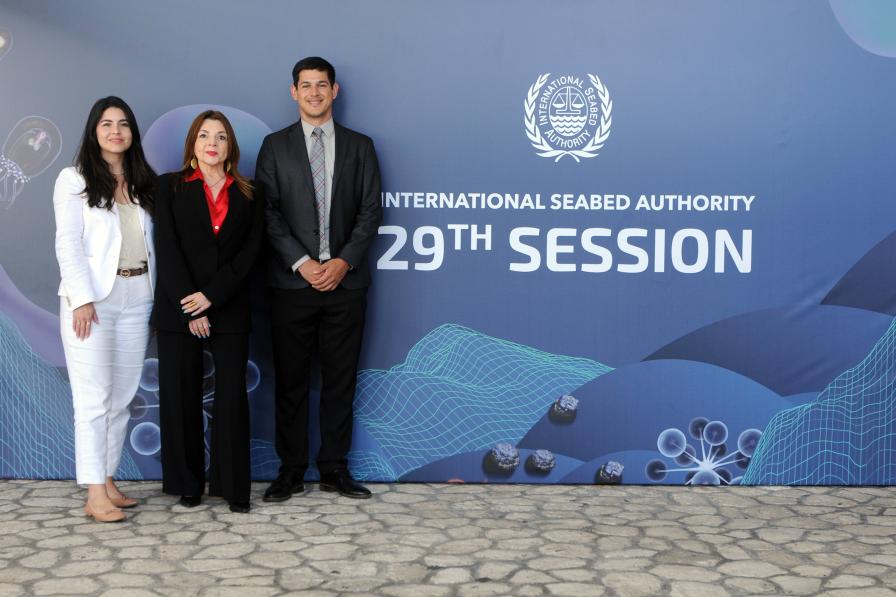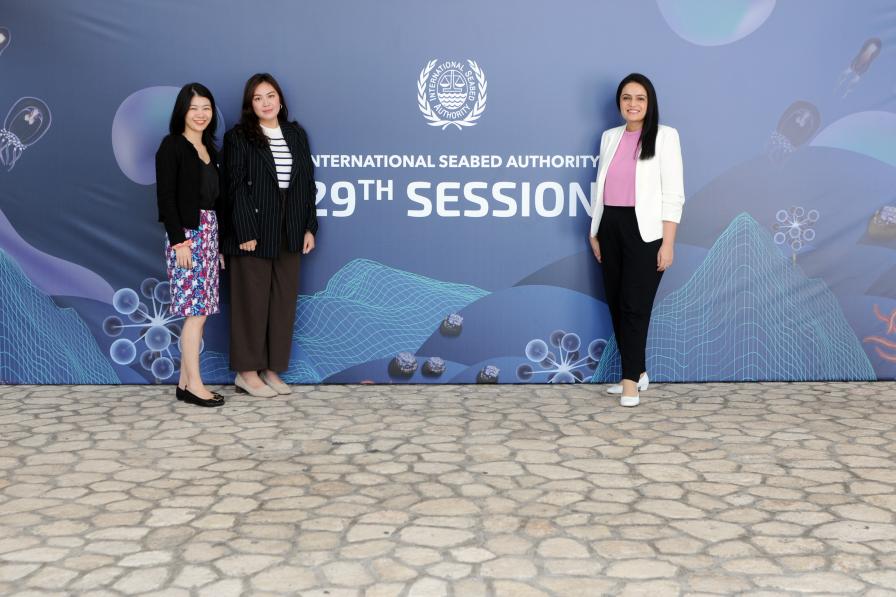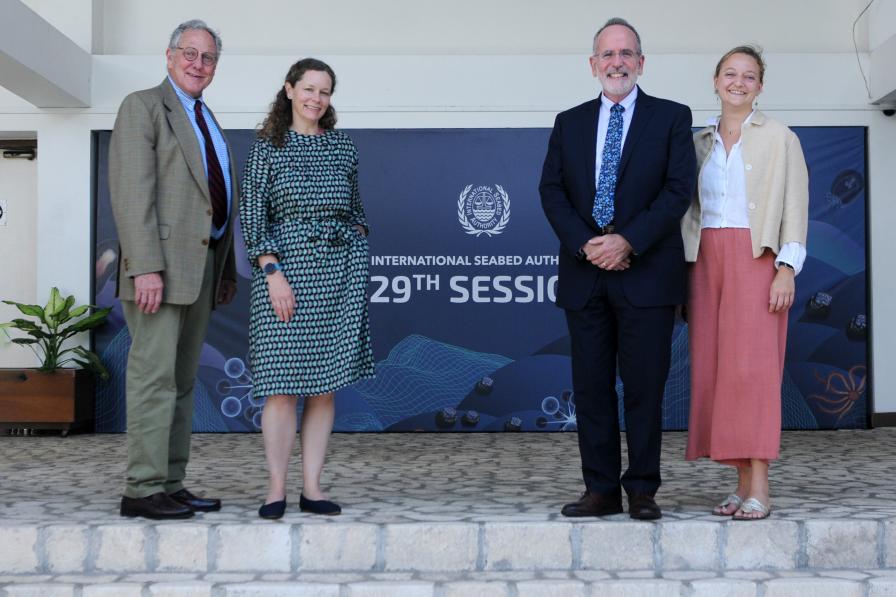“I am pleased with the progress on Monday and Tuesday,” noted Council President Olav Myklebust (Norway) at the start of Wednesday’s morning session of the International Seabed Authority (ISA) Council, highlighting useful suggestions on the draft exploitation regulations for deep-sea mining already discussed. “The sun is shining today as well and will help us keep the pace and move forward in our discussion,” he added before inviting delegates to once again dive into the consolidated text.
In another busy day of negotiations, draft exploitation regulations on the protection and preservation of the marine environment and the review and modification of a plan of work dominated the deliberations. Delegates focused on:
- test mining (regulation 48 ter);
- the emergency response and contingency plan (regulation 53);
- pollution control (regulation 53 bis);
- restriction of mining discharges (regulation 53 ter);
- funding of the environmental compensation fund (regulation 56);
- modification of a plan of work by a contractor (regulation 57);
- review of a plan of work (regulation 58); and
- the closure plan (regulation 59).
On test mining, Germany provided a report on intersessional work, stressing that five core aspects require further consideration:
- The purpose of test mining;
- The stage of the process where test mining is required to be carried out;
- The costs of test mining projects as one of the factors for deciding on its mandatory nature;
- The interface of test mining with other regulatory mechanisms and relevant ISA responsibilities; and
- The establishment of a technical subgroup consisting of scientists, regulators, and contractors.
Delegates highlighted the importance of test mining for informed decision-making and supported further intersessional work, possibly through a workshop. Many supported conducting test mining before any application for a plan of work for exploitation. A few delegates noted test mining should be a precondition for commercial development rather than for an application for an exploitation plan of work.
Some preferred conducting test mining at the exploration stage but cautioned that not all exploration contracts currently in place have an obligation to perform test mining or follow the same rigorous standards.
Observers emphasized the inadequacy of current assessment data and that a holistic approach is necessary to undertake rigorous study of the impacts of deep-sea mining.
Many delegates stated that emergency response and contingency plans need to be submitted as part of an application for a plan of work and that the results of environmental impact assessment reports should be considered. Delegates suggested including a timeline to submit incident reports and a provision on how incident reports may modify plans of work. They further discussed the regulation’s placement and the need to ensure alignment with other regulations and avoid duplication.
On pollution control, discussions focused on: the inclusion of references to the United Nations Convention on the Law of the Sea Article 145 (protection of the marine environment), harmful effects, other hazards, marine litter, underwater noise, and the coastline; and whether to refer to harmful effects “directly resulting” from activities in the Area, or developing a broader provision that would also make contractors responsible for indirect and cumulative effects.
On the restriction of mining discharges, delegates expressed diverging positions on references to rules of the International Maritime Organization as a basis for exceptions, with some suggesting references to regional seas conventions. They addressed cases where discharges are necessary for the safety of the vessel or human life and focused on a requirement for contractors to maintain a register of discharges and report to the ISA, discussing the frequency of such reporting.
On the modification of a plan of work by a contractor, many delegations requested the reintroduction of text, noting that the Legal and Technical Commission (LTC) shall consider whether a proposed modification to the plan of work constitutes a material change. A few delegates suggested that changes to a plan of work can be presented by the LTC, the Secretary-General, or the contractors; others noted that the Secretary-General should have only administrative functions. Many delegations supported adding that all modifications to a plan of work should be recorded in the seabed mining register.
On the review of a plan of work, delegates debated an alternative formulation that provides a more robust description of the entirety of the plan of work, and not just related activities, ensuring a comprehensive evaluation of the entire project scope. Delegates supported providing clearer guidelines on the submission of the plan of work to the ISA and discussed whether it is necessary to involve independent experts in reviewing the plan of work.
Finally, delegates initiated deliberations on the closure plan, discussing the regulation’s placement, as well as technical details such as temporary suspensions vis-à-vis closure and potential overlap between the closure plan and the environmental management and monitoring plan.
In the evening, the Cluster Maritime Français (CMF) organized a side event titled “The future of exploration: predictive species mapping for optimal monitoring of biological distribution on deep-sea ecosystems.”
To receive free coverage of global environmental events delivered to your inbox, subscribe to the ENB Update newsletter.
All ENB photos are free to use with attribution. For the 2nd Part of the 29th Annual Session of the ISA, please use: Photo by IISD/ENB - Diego Noguera
